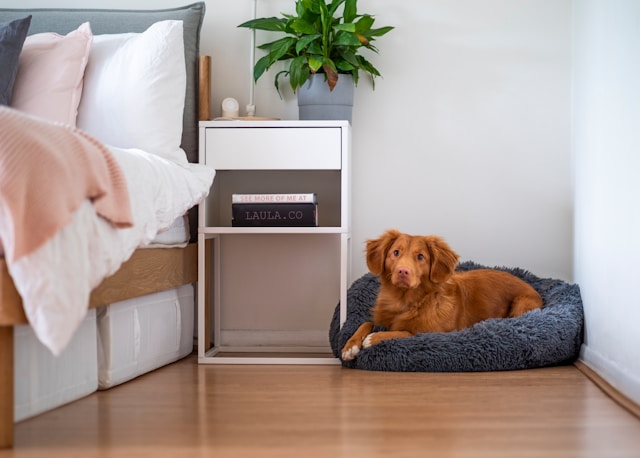The Role of Exercise in Your Dog’s Mental and Physical Health Essential Insights

Exercise is a cornerstone of a healthy lifestyle for dogs, playing a vital role in their physical and mental well-being. Regular physical activity not only helps maintain a healthy weight and muscle tone but also significantly impacts your dog’s mood, behavior, and overall quality of life. In this comprehensive guide, we’ll explore the multifaceted benefits of exercise for dogs, provide insights into how much exercise they need, and offer practical tips for creating an effective exercise routine.
Why Exercise is Essential for Your Dog
1. Physical Health Benefits
- Weight Management
- Prevents Obesity: Regular exercise helps prevent obesity, a common issue in dogs that can lead to various health problems such as diabetes, heart disease, and joint issues.
- Maintains Healthy Weight: Exercise burns calories and supports a healthy metabolism, helping dogs maintain an optimal weight.
- Cardiovascular Health
- Improves Heart Function: Regular physical activity strengthens the heart, improves circulation, and helps reduce the risk of cardiovascular diseases.
- Enhances Lung Capacity: Exercise improves lung function and oxygenation, promoting better overall respiratory health.
- Muscle and Joint Health
- Builds Muscle Strength: Exercise helps build and maintain muscle mass, which is essential for overall strength and mobility.
- Supports Joint Health: Weight-bearing activities help keep joints flexible and healthy, reducing the risk of arthritis and other joint-related issues.
- Digestive Health
- Stimulates Digestion: Regular physical activity helps regulate the digestive system, promoting healthy bowel movements and reducing the risk of constipation.
- Longevity
- Promotes Longevity: Active dogs tend to live longer, healthier lives compared to their sedentary counterparts. Regular exercise supports overall health and vitality.
2. Mental Health Benefits
- Reduces Anxiety and Stress
- Decreases Anxiety: Exercise releases endorphins and other feel-good chemicals that help reduce anxiety and stress in dogs.
- Prevents Destructive Behavior: A well-exercised dog is less likely to engage in destructive behaviors caused by boredom or stress.
- Enhances Cognitive Function
- Stimulates Mental Agility: Physical activity, especially when combined with mental challenges like training or puzzle toys, enhances cognitive function and mental sharpness.
- Prevents Cognitive Decline: Regular exercise helps keep a dog’s mind active, potentially delaying or preventing cognitive decline in older dogs.
- Improves Mood and Behavior
- Boosts Mood: Exercise promotes the release of dopamine and serotonin, which can improve your dog’s mood and overall sense of well-being.
- Reduces Behavioral Issues: Dogs that receive adequate exercise are less likely to exhibit behavioral problems such as excessive barking, jumping, or digging.
- Strengthens Bond with Owner
- Enhances Relationship: Engaging in physical activities together strengthens the bond between you and your dog, fostering a deeper connection and mutual trust.
How Much Exercise Does Your Dog Need?
The amount of exercise your dog requires depends on several factors, including age, breed, size, and health condition. Here’s a general guideline:
- Puppies
- Energy Levels: Puppies are generally very energetic and require frequent playtime and short exercise sessions.
- Exercise Duration: Aim for about 5 minutes of exercise per month of age, up to twice a day. For example, a 6-month-old puppy would need about 30 minutes of exercise daily.
- Adult Dogs
- Activity Levels: Most adult dogs require at least 30 minutes to 2 hours of exercise per day, depending on their breed and energy levels.
- Exercise Types: Include a mix of walking, running, and interactive play to keep them engaged and healthy.
- Senior Dogs
- Lower Intensity: Older dogs may have lower energy levels and joint issues, so exercise should be adjusted accordingly.
- Exercise Duration: Aim for shorter, low-impact activities such as gentle walks and swimming, around 20 to 30 minutes daily.
- Breed-Specific Needs
- High-Energy Breeds: Breeds like Border Collies, German Shepherds, and Labrador Retrievers require more exercise (up to 2 hours daily) due to their high energy levels.
- Low-Energy Breeds: Breeds like Bulldogs and Basset Hounds may need less exercise, around 30 minutes to 1 hour per day.
Types of Exercise for Dogs
- Walking
- Routine Walks: Regular walks provide essential physical exercise and mental stimulation. Aim for at least one or two walks per day, varying routes to keep things interesting.
- Leash Training: Proper leash training ensures safety and allows you to control the pace and direction of the walk.
- Running and Jogging
- Active Exercise: Running or jogging is excellent for high-energy dogs and provides a more intense workout.
- Gradual Increase: Start with shorter distances and gradually increase the duration and intensity to avoid overexertion.
- Playtime
- Interactive Games: Engage in games like fetch, tug-of-war, and hide-and-seek to provide both physical and mental stimulation.
- Dog Parks: Visiting dog parks allows for off-leash play and socialization with other dogs.
- Training and Agility
- Obedience Training: Incorporate training sessions into your routine, which can be mentally stimulating and physically engaging.
- Agility Courses: Set up agility courses or participate in agility classes to challenge your dog’s physical and mental skills.
- Swimming
- Low-Impact Exercise: Swimming is a great low-impact exercise that is easy on the joints, making it ideal for dogs with arthritis or joint issues.
- Safety Precautions: Always supervise your dog while swimming and ensure they have a safe entry and exit point.
- Mental Stimulation
- Puzzle Toys: Use puzzle toys and treat-dispensing toys to provide mental challenges and keep your dog engaged.
- Scent Games: Engage your dog’s sense of smell with scent games, such as hiding treats or playing “find it” games.
Creating an Effective Exercise Routine
- Consistency is Key
- Daily Routine: Establish a consistent exercise routine to ensure your dog gets the required physical activity regularly.
- Adjustments: Be flexible and adjust the routine based on your dog’s needs, health, and energy levels.
- Monitor Health and Performance
- Health Check: Regularly monitor your dog’s health and performance during exercise. Watch for signs of fatigue, discomfort, or injury.
- Consult Veterinarian: Consult your veterinarian if you notice any unusual symptoms or if your dog has specific health concerns.
- Variety and Engagement
- Mix Activities: Incorporate a variety of exercises to keep your dog engaged and prevent boredom. Change up walking routes, try different games, and explore new activities.
- Interactive Play: Engage in interactive play sessions to strengthen your bond and provide mental stimulation.
- Safety Measures
- Hydration: Ensure your dog stays hydrated during exercise, especially on hot days. Provide water before, during, and after physical activity.
- Weather Considerations: Be mindful of weather conditions. Avoid exercising during extreme heat or cold, and adjust the intensity of activities accordingly.
- Set Realistic Goals
- Tailor to Needs: Set realistic exercise goals based on your dog’s age, breed, and health condition. Gradually increase the intensity and duration of activities.
- Celebrate Achievements: Celebrate milestones and progress to keep your dog motivated and engaged in their exercise routine.
Conclusion
Exercise is a fundamental aspect of maintaining your dog’s mental and physical health. By incorporating regular physical activity into your dog’s routine, you can enhance their overall well-being, prevent health issues, and improve their quality of life. Understanding the importance of exercise, tailoring routines to your dog’s needs, and providing a variety of engaging activities are key to promoting a happy and healthy life for your furry companion.
Whether it’s through daily walks, playtime, or more intense activities, the role of exercise in your dog’s life cannot be overstated. Embrace the benefits of an active lifestyle, and enjoy the positive impact it has on your dog’s health and happiness.




